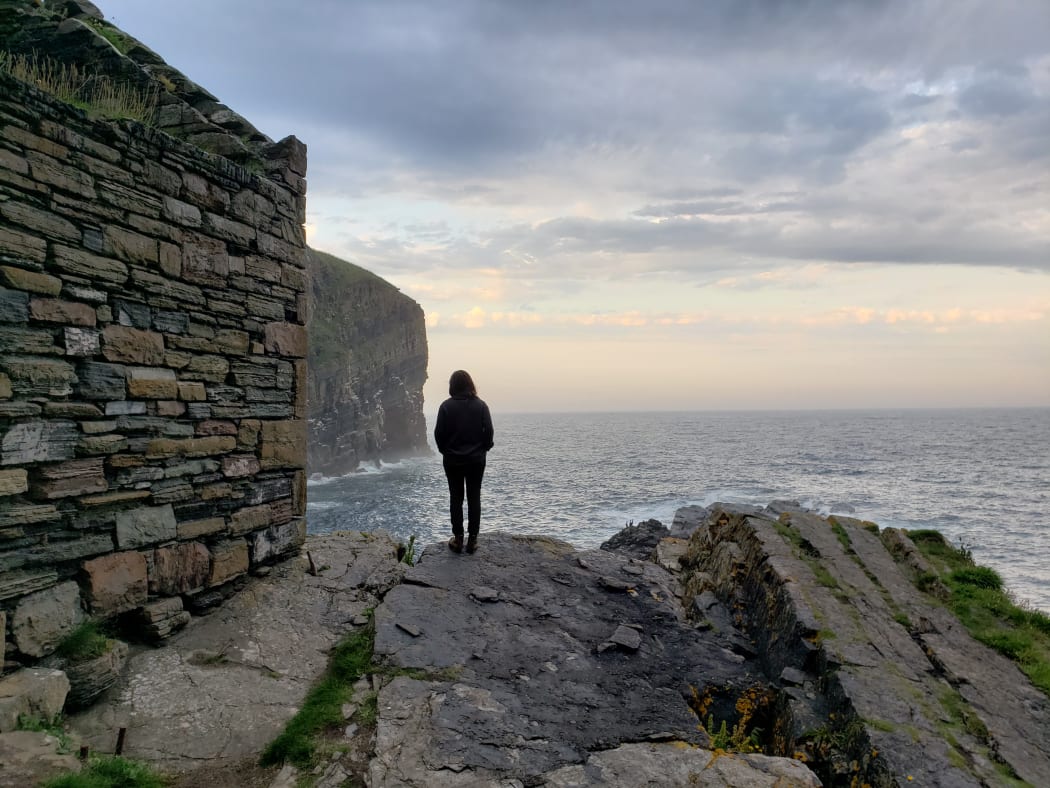
Field Notes, a site-specific exhibition created in response to the land, architecture, history, and culture of Caithness, Scotland, opened on August 9th, 2019 with a whirlwind event that capped over two weeks of intensive installation. Visitors descended on the small Manse, garden, and Byre to celebrate the work of artists Annie Cattrell, Anne Vibeke Mou, Anne Petters, and Jeff Zimmer. But let's step back a bit: before the event, before the bagpipers, before the lights were set. Before groans, curses, and aching backs that accompanied the installation of the show, I arrived to a near empty space.
It is a rare privilege to tour an exhibition in the midst of installation. The artists, having participated in a group residency in April, performed multiple site visits and left the space in various states of process, reflecting different approaches. Annie Cattrell transformed the Horse Barn into a studio, installing a small kiln, placing maquettes, and spreading materials throughout the space. Mou, in contrast, left a few elements in the Store Room: two fragile glass spheres and bit of dried kelp tucked into a corner of the window sill. Both Cattrell's and Mou's intentions for the Byre were discussed in a previous post.
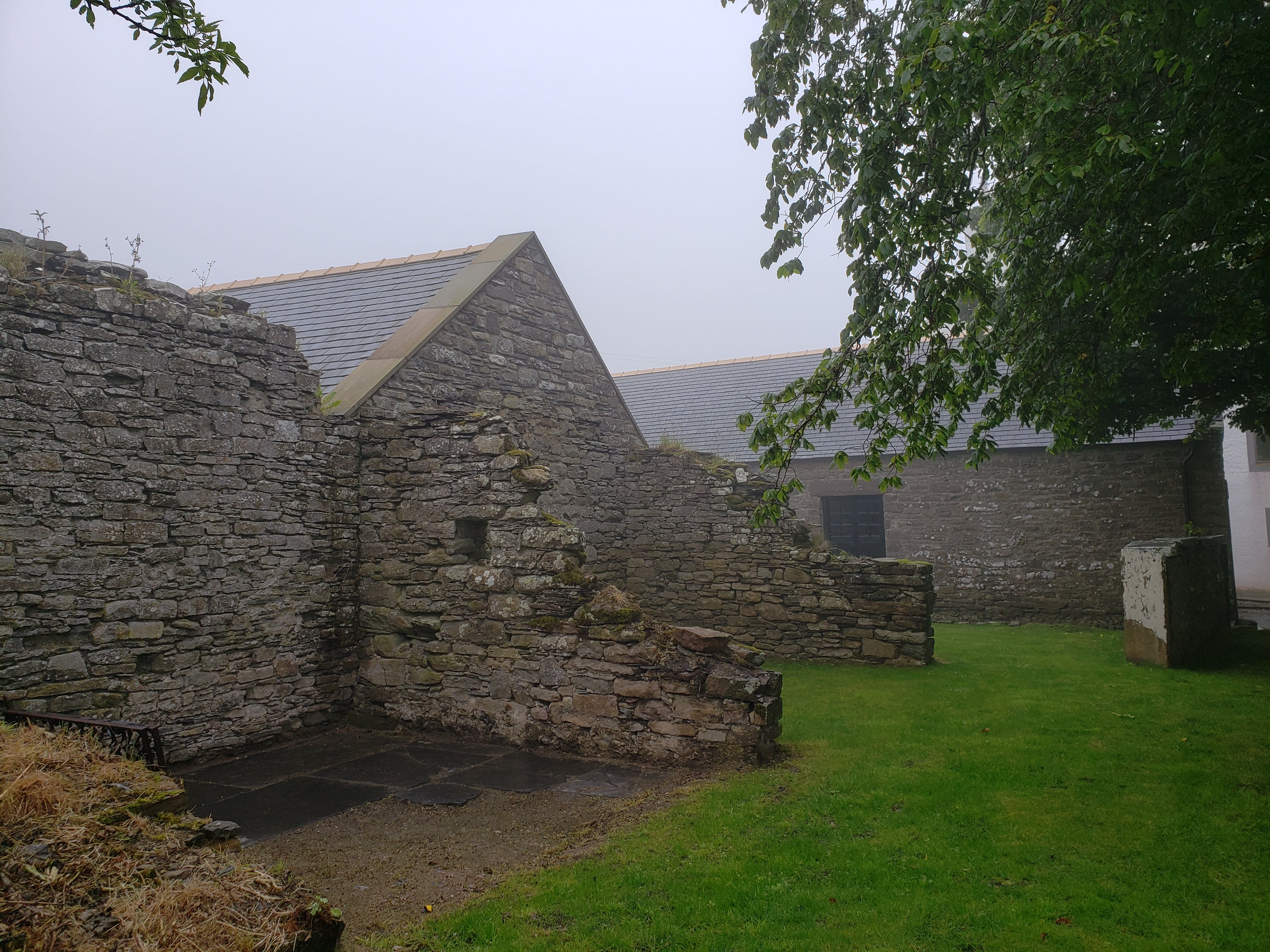
The Byre - Photo: M. Endo
Of the four spaces in The Byre, the Cow Barn is the most dramatic. Divided into three stalls by massive flagstone slabs embedded a meter deep into the earth, rough stones cover the floor and wooden beams are vaulted above. Remnants of use and occupation remain: a rusty chain hangs from one wall, and two glass boards re-created from the original wood by artist Michael Rogers, are permanently affixed in the space as a ghostly reminder of a previous installation and reference to the building's past.
Edinburgh-based Jeff Zimmer, who is most known for atmospheric glass paintings, left interventions in the space. Cracks and crevices in the floor and wall glint and shine with tiny beads of clear and lavender glass. Gum arabic adheres them in place while also oozing into the stone grooves as if the the stone were weeping. These initial steps toward his installation were part of a project in which Zimmer sought out and collected stories from the LGBTQ+ community in Caithness. These stories shaped the narratives in his installation.
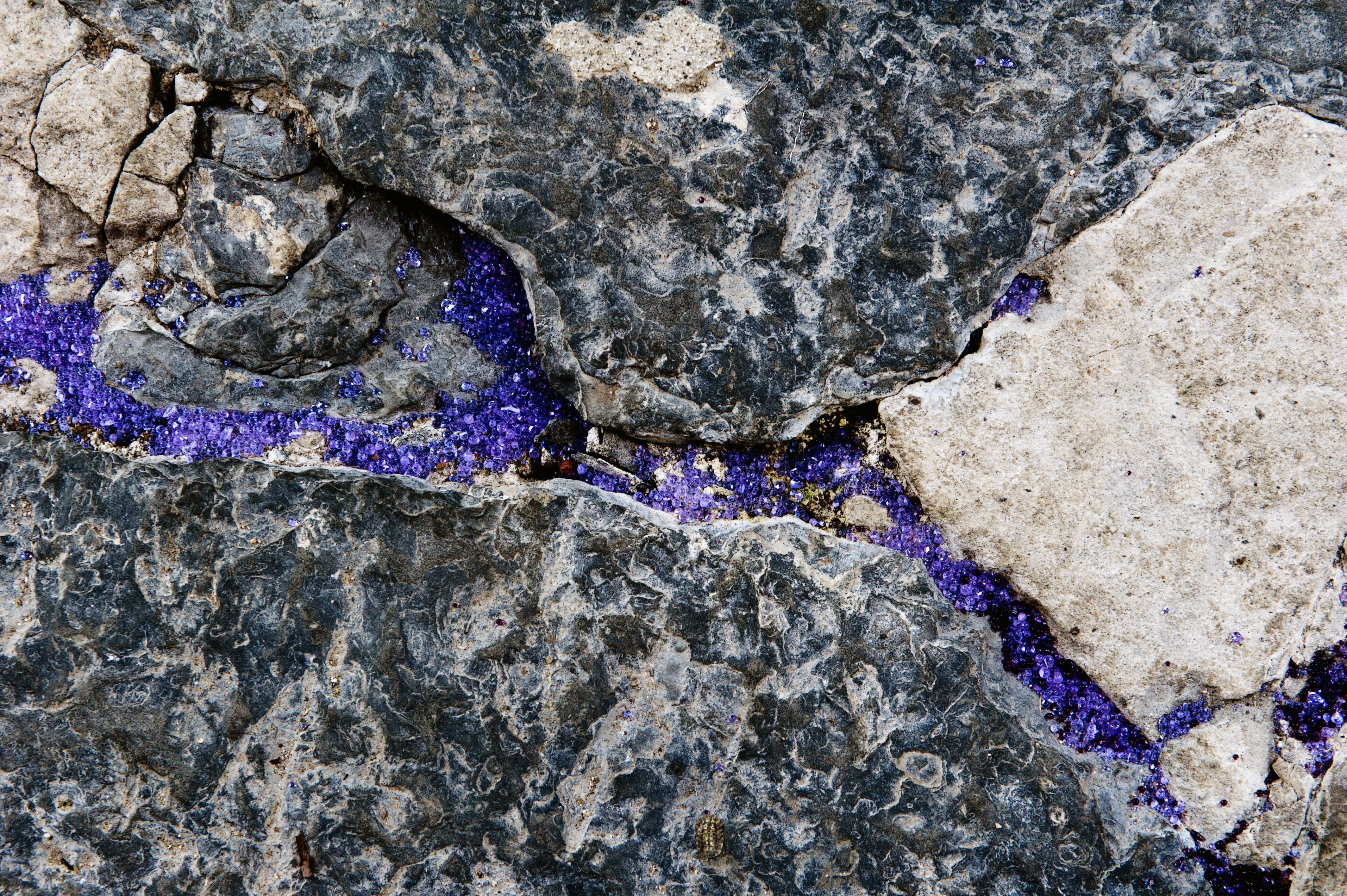
Lavender glass fills the flagstone cracks - Photo: A. Mackay
This is a departure from his previous work and is the first time Zimmer has created a site-specific installation in such a dramatic location. In recent years, Zimmer has been exploring his own identity and sexuality in various projects, but this installation provided an opportunity to expand on this work. Through multi-layered glass paintings; a series based on black mirrors (also called Claude glass after the artist Claude Lorrain); and the aforementioned wall and floor-based installations, Zimmer continues his interest in addressing contemporary themes with pre-modern symbols and forms.
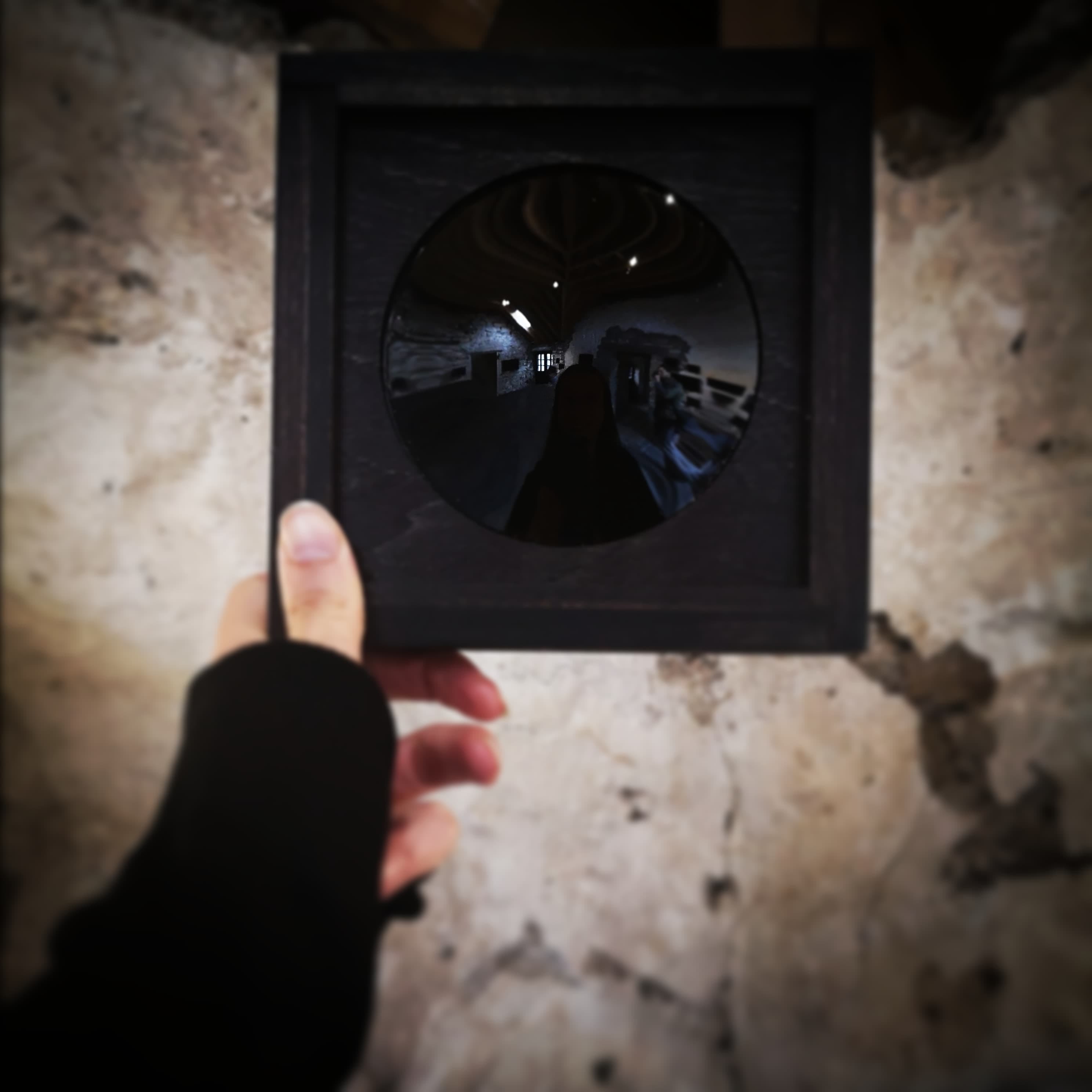
Passing from the Cow Barn into the Hay Barn we enter the space where Anne Petters mounted her installation. Arriving a week earlier than the other artists, Petters was the only artist present when I made my silent investigation into the space. Originally from Dresden, Petters is based in London and is known for ethereal pâte de verre sculptures that incorporate fragments of drawing and writing, speaking to incomplete narratives or thoughts lost to time.
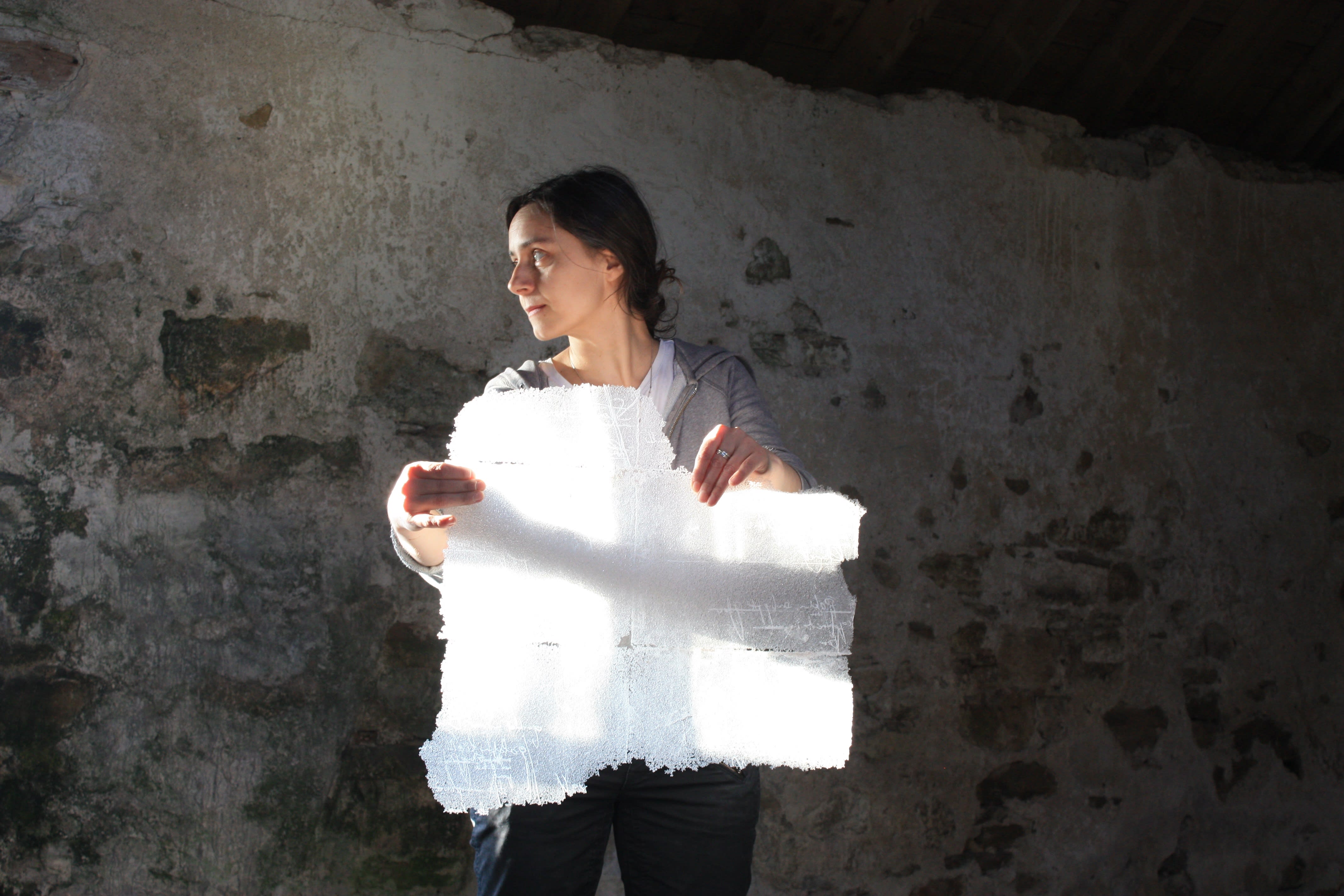
Throughout the installation, glass "pages" are suspended in the air, floating just above the ground, or are gathered into a book whose crumpled pages appear to deteriorate in front of the viewer. Diaristic and automatic writing, embossed onto the surface of the glass, references the stories we will never know about the spaces we come to occupy. Fragments that are sometimes gleaned from a local shepherd or are imagined by visitors who happen upon a ruined barn at the edge of the world.
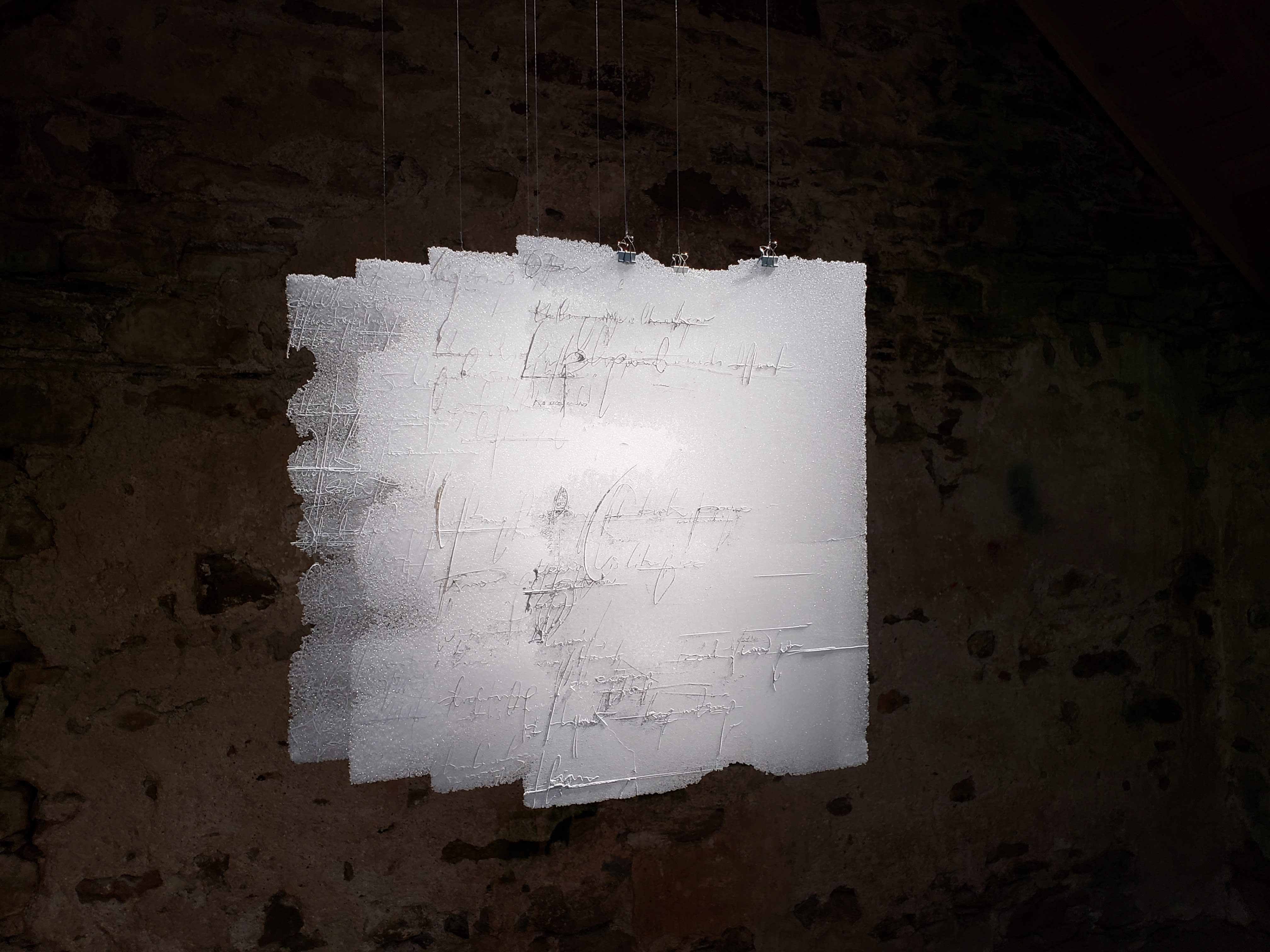
Petters and Zimmer both explore narratives and phenomena. The world reflected darkly in a black mirror speaks to the unseen and to stories untold without a change in perspective or a shift in orientation. Light glinting off crumbling pages of inchoate text embody the impermanence of memory and its malleability whenever we use our own stories to resurrect the past.
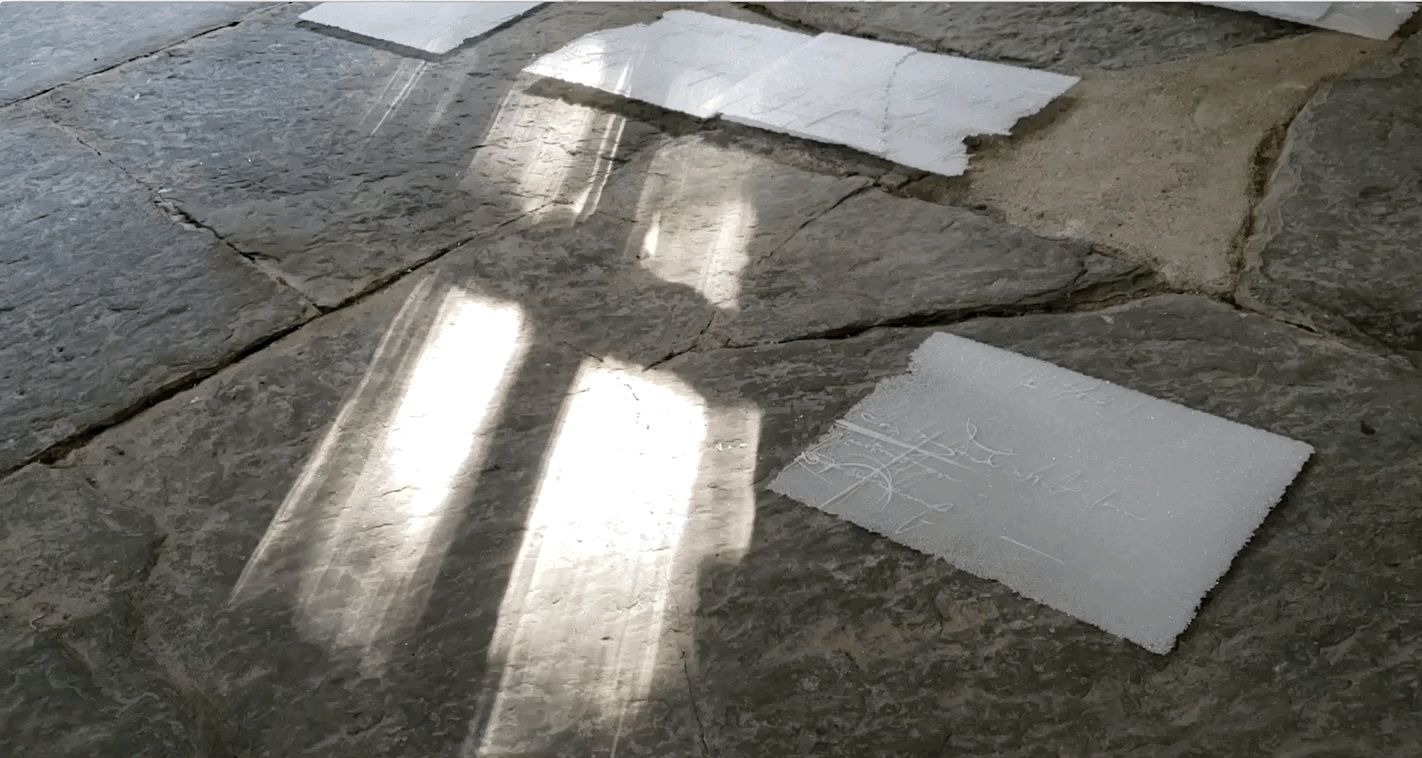
Light falling on detail of Anne Petters' "White Sequence" - Photo: M.Endo
Read more
Field Notes @ The Byre part 1: Looking Down at the Sea from the Bottom of a Lake
Field Notes @ The Byre part 2: The Confluence of Past, Present, and Future
